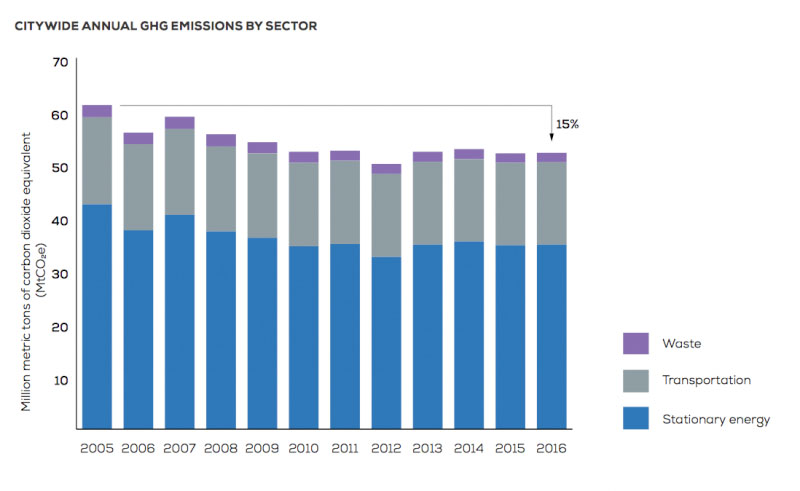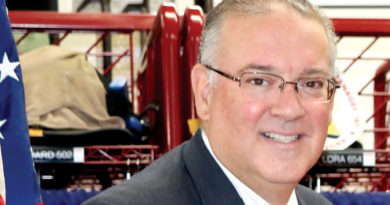NYC Continues to Aim for Carbon Neutrality
BY MAYRA DIRICO
QCC CHAIR
Mayor Bill de Blasio has released a comprehensive plan outlining how New York City will attempt to comply with the Paris Agreement and the goal of curbing global temperature rise to 1.5 degrees Celsius.
The plan focuses on two deadlines: 2020 and 2050. City leaders had already committed to reducing greenhouse gas (GHG) emissions 80 percent below 2005 levels by 2050. To keep to the 1.5 degrees target, New York has to reach carbon neutrality, or zero net emissions.
Actions are broken down into three categories: building and electrical grids, transportation and waste.
Building and electrical grids: Fossil fuels burned for heat and hot water in buildings are the city’s largest source of GHG emissions, accounting for about 39 percent of the city’s total. Going forward, leaders plan to pursue legislation requiring that all large buildings limit those emissions by 2030 and 2035, respectively.
This is the single largest action the city will implement to reduce GHG emissions and will also require setting energy intensity requirements that take into consideration impacts on utilities, specifically tenant uses and economic activity.
The city also plans to retrofit city-owned buildings, adopt new building codes that require much lower energy design targets and implement a financing mechanism that treats clean energy and efficiency upgrades as a public benefit, thus allowing them to be funded through property bills with no money down. Officials will also work on a 100 percent renewable grid for city operations.
Transportation: Roughly 90 percent of the city’s transportation greenhouse gas emissions come from private car travel. In response, the city has committed that by 2050, four out of every five trips a New Yorker takes — or 80 percent — will be by foot, bike or on public transit.
The city will support that goal through subway and bus system improvements, new miles of protected bike lanes and an expanded bike-share with the aim of doubling the number of active cyclists by 2020. It also plans to expand “smart parking policy that prioritizes access to curb space, and exploring options for low emission zones that limit access in the city for the worst polluting vehicles.”
For those who are still set on driving, the city will also roll out better electric vehicle charging infrastructure.
Waste: New Yorkers will soon no longer have to sort their recyclables, which the city hopes will dramatically increase the city’s recycling rate. They will also be able to drop off organic waste.
Equity and climate change are inexorably linked. While climate change affects everyone, its impacts are not equally shared. Simply put, the poorest and most vulnerable are the hardest hit. Therefore, the work to reduce GHG emissions must address economic and social inequities.
The Queens Chamber will always work to advocate for our members and work with the city to advance green guidelines. Further, our Energy and Environmental Committee continues to lead the charge in reigning-in green businesses and connecting them with opportunities for infrastructure improvement in the borough.
Editor’s Note: Stats and data taken from NextCity.





